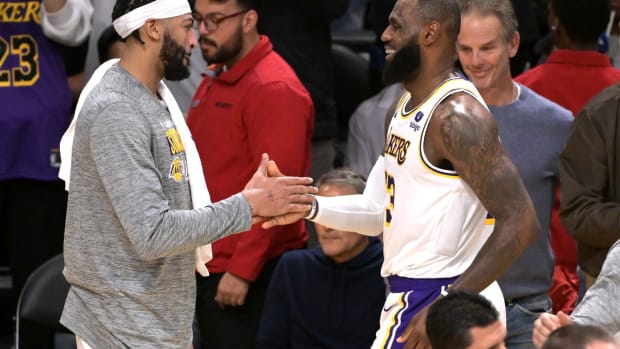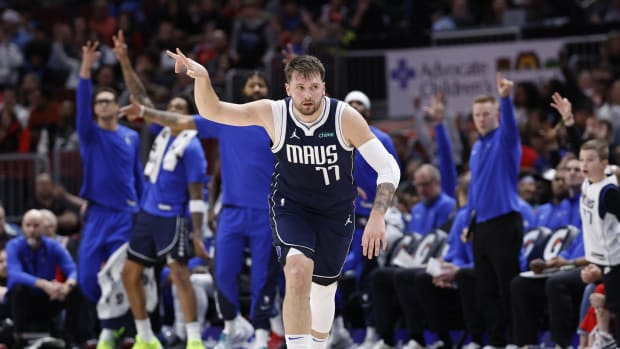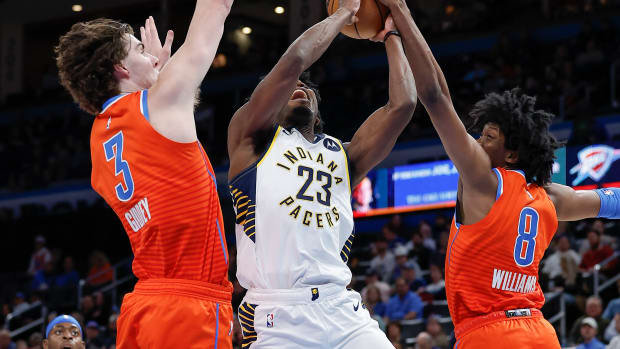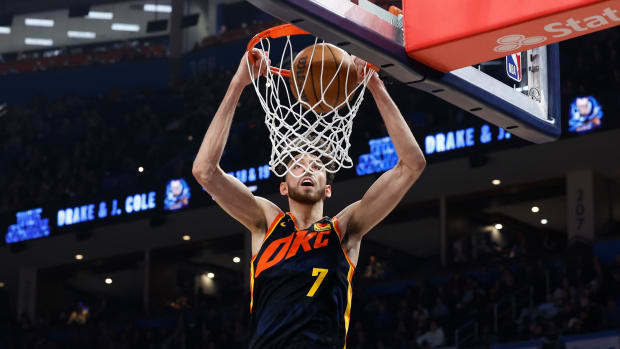Summer Stock Watch: Where 2020 NBA Draft Prospects Stand
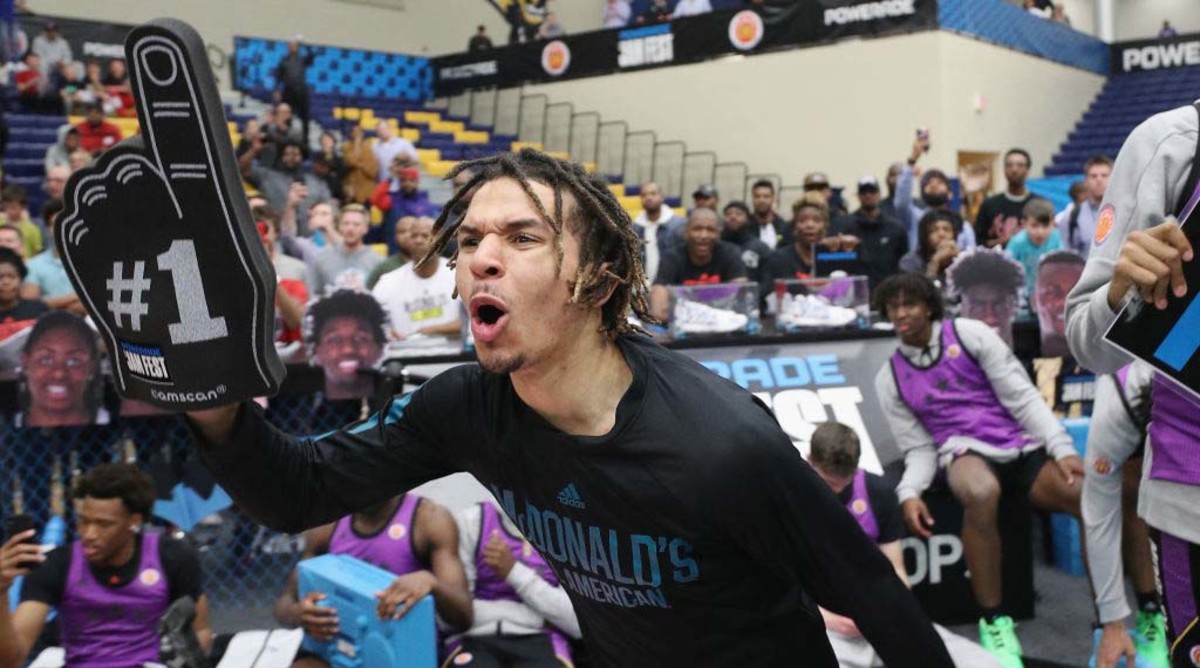
A long summer of shoe camps, exhibition games and international tournaments has wound to a close, and the early makeup of the 2020 NBA draft has begun to coalesce. Granted, it’s not a draft teams are particularly excited about at this stage, but there’s always room for that to change. The lack of a defined, obvious No. 1 pick at this point in time as well as a dearth of overly compelling options speaks to the shape of things, but it also begs us to remember that there’s tons of time and room for players to emerge. We’re not quite in mock draft territory yet, but below are a slew of notable players worth watching closely based off their off-season play.
Cole Anthony, North Carolina
He’s been reasonably hyped for the past couple of years, but Anthony has become one of the more heavily nitpicked incoming freshmen in this year’s class in NBA circles, and an intriguing early topic of discussion. North Carolina appears ready to hand him the keys, and what he does with them and how he handles the transition will be a big determinant in where he’s eventually selected. Barring anything wild, Anthony will be a lottery pick, but the diverse skill sets and relative quality of a guard-heavy class make it hard to say much else with confidence. Anthony was generally quite good at the Nike Skills Academy, making jumpers, attacking the paint and keeping defenders off balance with the ball in his hands. His handle is terrific, he’s explosive in space, and he seems likely to live at the foul line this season. Anthony competes consistently and seems like a lock to post big counting stats for the Tar Heels. It‘s tough to deny his quality and polish, and the level of floor they create.
Anthony has also filled out well physically in his upper body the past couple years, although as some scouts note, perhaps to the point where he might be close to maxed out from that perspective. He’s listed at 6’3”, but appears a couple inches shorter up close. There are some innate drawbacks here—his natural playmaking inclinations leave something to be desired, and he can be prone to overdribbling in the interest of making things happen rather than understanding when to defer, pick his spots and move the ball. There continue to be whispers around the industry that Anthony’s leadership skills leave something to be desired, and that his high school peers never particularly enjoyed playing alongside him, a situation that should come to a head one way or another at Carolina, where he’ll be tasked with a lot of responsibility. There’s been some use of now-Cavaliers guard Collin Sexton as a point of comparison at a similar stage—granted, Anthony is less than a year younger than Sexton and will be 20 years old on draft night. Teams will be faced with evaluating all that he brings to the table: Anthony could end up a top-five pick, or inch close to the latter half of the lottery.
Deni Avdija, Maccabi Tel Aviv
After leading Israel to a win at the U20 European Championships, Avdija goes into the fall with a great deal of momentum, with some making a case for him as the top international prospect, and projecting for the moment as a lottery pick. It’s probably too soon to call him a lock for a top-five selection, as there are still a lot of questions for him to answer at the pro level, where he’s yet to secure consistent playing time for Maccabi’s senior team. There’s some expectation that they will make room for him, and the next step will be producing consistently outside his age group, where his outstanding competitive juice, size and passing skills have set him head and shoulders above his peers over the last couple years. It seems inevitable those strengths will draw Luka Doncic comparisons, and it’s worth addressing immediately that Avdija is nowhere near that level at the same age: Doncic was quite clearly a generational prospect in Europe, and there may never be another teenager who accomplishes the things he did for Real Madrid. The sooner our brains can separate those two situations, the better.
All that said, Avdija has some compelling strengths and notable weaknesses that have been clearly on display, dating back to winning MVP at Basketball Without Borders in February, where he dazzled for stretches as a passer and thrived in an unstructured environment. The playmaking ability is the most projectable part of his game, although his shortcomings as an athlete and ball-handler mean he’ll likely need a ball screen to operate most effectively long-term. He’s excellent hitting ahead in transition and finding teammates, and can grab and go off the glass and use his size to his advantage in the open floor. Avdija is a capable set shooter, if not an overly dynamic one pulling up, but his perimeter skill set makes sense as a bigger guard in the modern NBA. Defensively, he won’t have the athletic tools to be great, but his feel for team defense should help make him passable as he adds strength. He may have to defend fours or be hidden on shooters long-term, which is somewhat concerning. Still, if Avdija can improve as an off-ball option and maximize his strengths, evolving into a starting-caliber NBA player is within reach. His situation this season and how he handles it will determine how high he’s drafted.
Karim Mane, Vanier College (Canada)
Mane was one of the most intriguing prospects at the U19 World Cup in Greece, making some impactful, if inconsistent contributions for Canada and flashing big-time athleticism and ability to get downhill. He’s tall, long, can bully defenders off the dribble at this level, and showcased a nice mix of pace and finishing skills on the inside, while also contributing as a rebounder and fishing for steals. His jumper is passable and still improving. His overall upside as a well-rounded perimeter player is undeniable, although his feel may not be full-time point guard caliber, and the fact he’s innately scoring-oriented and ball-dominant creates a high bar for him to clear moving forward.
Mane turned 19 in May, meaning he was technically draft-eligible as an international prospect this year, and told ESPN earlier this summer he’d weigh the possibility of making the leap in 2020 and skipping college. He has a host of high-major offers if he chooses to go that route, which would slate him for the 2021 draft at the earliest, but NBA teams will do their due diligence this season, given the possibility he decides to try and turn pro next spring. He’s a freaky athlete with some tangible upside, and could legitimately benefit from the potential shakiness of the forthcoming draft. He’s well worth tracking over the course of this season, at bare minimum.
Kahlil Whitney, Kentucky
Whitney showcased his elite physical tools at the Nike Academy and profiles cleanly as the type of athlete that can hold his own at the highest level. He’s big, strong and explosive, plays above the rim, and offers a nice degree of upside on the defensive end, where he can capably stick guards and wings of different sizes. A good point of comparison might be Jaylen Brown, although Brown was far more advanced offensively at a similar stage of his development, while Whitney continues to try and refine himself into a consistent pull-up shooter and ball-handler. His release doesn’t look bad, but it’s on the slower side and doesn’t translate cleanly into game situations. Still, he fits into a similar idea of what a modern NBA forward can be, whether he’s a three or a four long-term based on his skill set. Whitney’s role at Kentucky this season should be a point of curiosity when it comes to better projecting him going forward, and while he’ll likely struggle to score in the halfcourt, the tools make him fairly safe to pencil in as a first-round talent at this point.
Tristan Enaruna, Kansas
There’s been much more talk about other guys on Kansas’s roster, with Devon Dotson and Ochai Agbaji returning, but Enaruna, a Dutch forward who put together a big-time showing at the U20 Euros, has become a sneaky one-and-done candidate. While he can sometimes get caught up hunting shots, Enaruna completely passes the eye test on the wing, with nimble feet, nice size on the perimeter, and potential to score at all three levels. He’s smooth off the dribble, can finish with both hands, has above-average coordination athletically, and might end up recognized as Kansas’s best prospect come spring. He attended Basketball Without Borders Global Camp in February, and has continued to track well. Enaruna looks like far and away the most intriguing long-term guy on the roster for the Jayhawks, and while it’ll be curious to see how he’s used in the earlygoing on a team that returns some talent and will be meshing newcomers at forward, safe to say he’s been sneakily underrated.
Obi Toppin, Dayton
Toppin was one of the better college players at Nike Skills, with the obvious caveat being that he’s an older prospect with just one college season under his belt after taking a prep year and then academically redshirting. He was rather productive last year, winning A-10 Rookie of the Year as a focal point for a Dayton team that won 21 games. Toppin pops physically, plays with an edge and is willing to do the dirty work, and impressed at the camp while knocking down jumpers, showcasing some versatility on both sides of the ball at 6’8”, and making an intriguing case as a long-term role player. Yes, this sounds like the same story we heard with eventual second-rounder Eric Paschall a year ago, but Toppin is clearly tracking toward the 2020 draft. He’ll have to keep answering questions about what role he plays, but if the jump shot and energy levels stays consistent, those things may resolve themselves in time.
Joel Ayayi, Gonzaga
A strong showing for France at the U19 World Cup suggests we shouldn’t forget about Ayayi, who redshirted his first year at Gonzaga, didn’t play much last season, and is now poised for big minutes at guard within a new-look rotation. Ayayi has nice size for a combo guard, possesses some innate creativity off the dribble, and while he can float in and out of games at times, his general knack for making plays happen is impressive. Still just 19 years old, it should be no surprise if he breaks out as a sophomore, and it’s not out of the question he could establish himself as the most intriguing long-term prospect on the team. Gonzaga rarely rushes younger players, and it’s apparent that’s been the case for Ayayi as opposed to any lack of talent. He’s not elite athletically and might still be a year away, but there aren’t a lot of guards with his natural blend of height and craftiness.

































